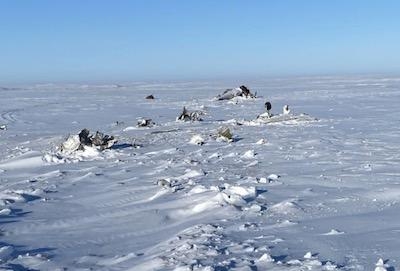Five Fatally Injured When The Aircraft Impacted Terrain
The NTSB has released its preliminary report from an accident which occurred on February 6 at about 1110 Alaska standard time involving a PA-32R-300 airplane. All five people aboard the aircraft were fatally injured when the aircraft impacted terrain about 30 minutes after takeoff.

According to the report, the airplane was operated by Paklook Air Inc., doing business as Yute Commuter Service on a scheduled visual flight rules (VFR) commuter flight. Instrument meteorological conditions prevailed at the departure and arrival airports at the time of the accident, and a company flight plan was filed. The flight originated from Bethel Airport (PABE), Bethel, Alaska, about 1040, and was destined for Kipnuk Airport (PAKI), Kipnuk, Alaska.
The commercial pilot was conducting a scheduled flight from PABE to PAKI, then Chefornak Airport (PACK) and back to PABE with mail and passengers. The first flight segment was about 100 nautical miles (nm) to the southwest coastal village of Kipnuk. According to the company flight following log, the pilot called outbound at 1034. A pilot from another company stated that the accident airplane departed right before his airplane under a special VFR departure clearance and the cloud ceiling was 600 ft overcast.
According to the company's flight following notes, the village agent from PAKI called the company flight follower at 1140 and reported the airplane overdue. The company president, who was exercising operational control, initiated their overdue airplane procedures. The FAA, the Alaska Rescue Coordination Center and the Alaska State Troopers were notified. No emergency locator transmissions (ELT) were received. About 1315 the company dispatched two airplanes to search for the missing airplane. A crew located the wreckage along the route from PABE to PAKI. An Army National Guard UH-60 based in PABE launched to the scene with two LifeMed medical personnel onboard who determined that the occupants had received fatal injuries.
On February 7, 2020, a team of Alaska State Troopers, US Fish and Wildlife Service, Bethel Fire Department, Tuntutuliak search and rescue personnel and a National Transportation Safety Board investigator traveled to the accident scene via snow machine and airplane. The wreckage was highly fragmented along a westerly track about 390 ft long on level snow covered tundra at a GPS elevation of 37 ft. All major components were located at the scene. The wings were separated from the fuselage, with extensive damage to the right wing, which was in three sections. The main wreckage was at the west end of the debris pattern and consisted of the upright fuselage, empennage and engine sections. The engine and forward fuselage were displaced 80° to the right with extensive fore to aft crush damage.
The airplane was not equipped with a tracking device, functional ADS-B, recorder devices or a GPS with non-volatile memory. The Bethel area does not have air traffic control radar services, therefore, there is no available track information for the flight.
A detailed wreckage examination is pending following recovery.
The pilot began initial training with Paklook Air on January 7, 2020, with total flight time of 611 hours. He completed a pilot competency check ride on January 27 and initial operating experience requirements on January 30. The accident flight was his fourth line flight and he had accumulated 30 hours in the accident airplane make and model before the accident.
The closest official weather observation station to the accident site was PABE located about 50 miles northeast of the accident site. The 1056 observation reported wind from 320° at 4 knots; 5 statute miles visibility in mist; overcast clouds at 800 ft; temperature 3° F; dew point 1° F; and an altimeter setting of 29.68 inches of mercury.
The PAKI weather observation at 1056 reported wind from 020° at 17 knots; 9 statute miles visibility in light snow, overcast clouds at 600 ft; temperature -8° F; dew point -11° F; and an altimeter setting of 29.70 inches of mercury.
In the hour after the accident, both the departure and intended destination airports reported low instrument flight conditions down to as low as ½ statute mile visibility in light snow, mist, and freezing fog with ceilings as low as 400 ft.
(Image provided with NTSB preliminary report)
 ANN's Daily Aero-Term (04.28.24): Airport Marking Aids
ANN's Daily Aero-Term (04.28.24): Airport Marking Aids Aero-News: Quote of the Day (04.28.24)
Aero-News: Quote of the Day (04.28.24) ANN's Daily Aero-Linx (04.28.24)
ANN's Daily Aero-Linx (04.28.24) Aero-News: Quote of the Day (04.29.24)
Aero-News: Quote of the Day (04.29.24) ANN's Daily Aero-Linx (04.29.24)
ANN's Daily Aero-Linx (04.29.24)



